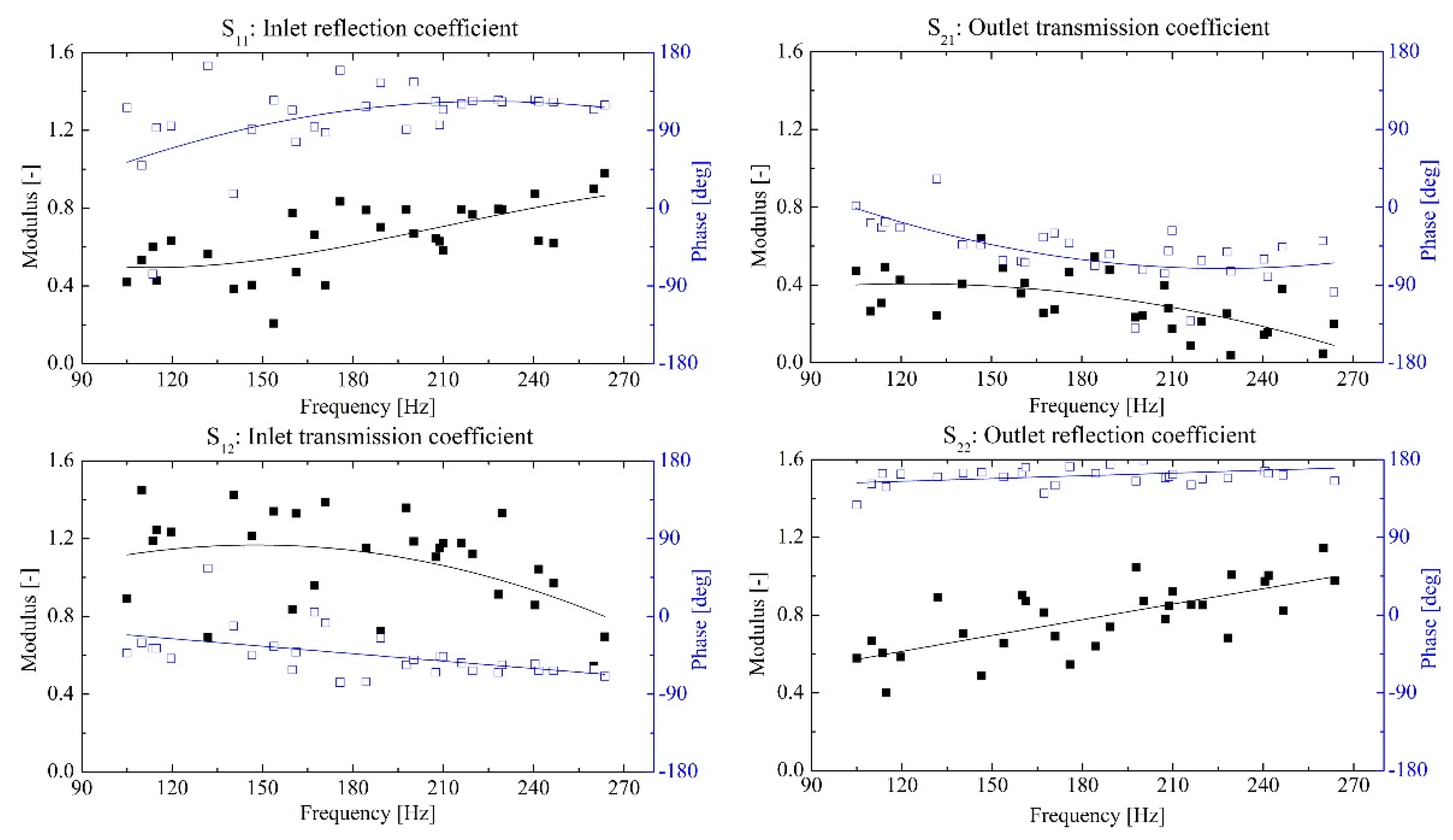Experimental Investigation on the Acoustic Scattering Matrix for a Centrifugal Pump †
Abstract
:1. Introduction
2. Hydraulic System
3. Methodology
4. Pump Scattering Matrix
5. Conclusions
Author Contributions
Acknowledgments
Conflicts of Interest
References
- Choi, J.S.; McLaughlin, D.K.; Thompson, D.E. Experiments on the unsteady flow field and noise generation in a centrifugal pump impeller. J. Sound Vib. 2003, 263, 493–514. [Google Scholar] [CrossRef]
- Chu, S; Dong, R; Katz, J. Relationship between unsteady flow, pressure fluctuations, and noise in a centrifugal pump—Part A: Use of PDV data to compute the pressure field. J Fluid Eng. 1995, 117, 24–29. [Google Scholar] [CrossRef]
- Yamamoto, K.; Müller, A.; Ashida, T.; Yonezawa, T.; Avellan, F.; Tsujimoto, Y. Experimental method for the evaluation of the dynamic transfer matrix using pressure transducers. J. Hydraul. Res. 2015, 53, 466–477. [Google Scholar] [CrossRef]
- Munjal, M.L. Acoustics of Ducts and Mufflers; John Wiley & Sons: Chichester, UK, 2014. [Google Scholar]
- Parrondo, J.; Pérez, J.; Barrio, R.; Gonzalez, J. A simple acoustic model to characterize the internal low frequency sound field in centrifugal pumps. Appl. Acoust. 2011, 72, 59–64. [Google Scholar] [CrossRef]
- Bardeleben, M.J.R.; Weaver, D.S. Estimation of the acoustic scattering matrix for a centrifugal pump. In Proceedings of the ASME 2002 International Mechanical Engineering Congress and Exposition, New Orleans, LA, USA, 17–22 November 2002. [Google Scholar]




Publisher’s Note: MDPI stays neutral with regard to jurisdictional claims in published maps and institutional affiliations. |
© 2018 by the authors. Licensee MDPI, Basel, Switzerland. This article is an open access article distributed under the terms and conditions of the Creative Commons Attribution (CC BY) license (https://creativecommons.org/licenses/by/4.0/).
Share and Cite
Li, G.; Parrondo, J.; Wang, Y. Experimental Investigation on the Acoustic Scattering Matrix for a Centrifugal Pump. Proceedings 2018, 2, 1489. https://doi.org/10.3390/proceedings2231489
Li G, Parrondo J, Wang Y. Experimental Investigation on the Acoustic Scattering Matrix for a Centrifugal Pump. Proceedings. 2018; 2(23):1489. https://doi.org/10.3390/proceedings2231489
Chicago/Turabian StyleLi, Guidong, Jorge Parrondo, and Yang Wang. 2018. "Experimental Investigation on the Acoustic Scattering Matrix for a Centrifugal Pump" Proceedings 2, no. 23: 1489. https://doi.org/10.3390/proceedings2231489




